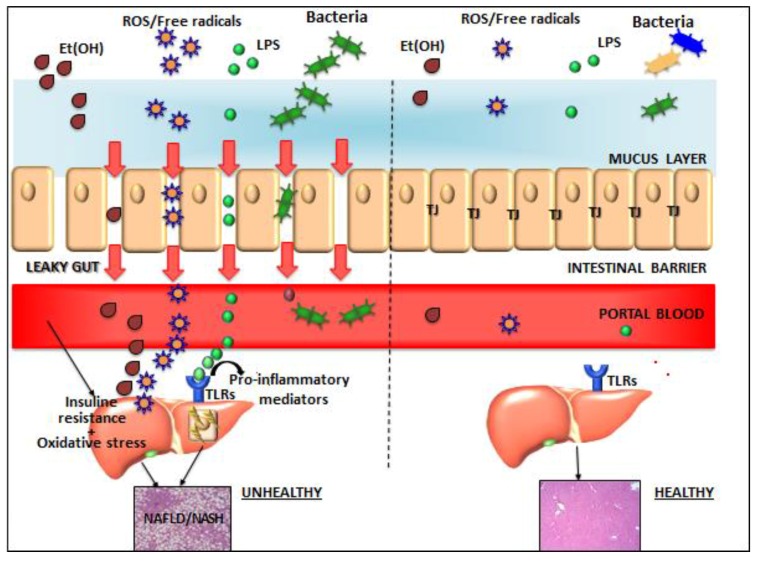Figure 1.
Gut–liver axis components in normal conditions (right part) and in non-alcoholic fatty liver disease (NAFLD)(left part).The presence of the dysbiotic microbiome and an altered intestinal barrier influenced by bacterial ethanol (EtOH), possibly associated with disruption of tight-junctions (TJs) (“leaky gut”), promotes the translocation of several bacterial products into the portal circulation. The interaction of bacterial products with toll-like receptors (TLRs) on the hepatic cell surface promotes the progression from simple steatosis to inflammation and fibrosis of the liver. ROS: reactive species of oxygen; NASH: non-alcoholic steatohepatitis; LPS: lipopolysaccharide; TLR: toll-like receptor.

